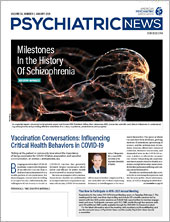Z-Drugs Come With Risks for Seniors With Dementia
Older adults with dementia who take high doses of Z-drug sedatives (zolpidem and relatives) have an increased risk of bone fractures and strokes compared with non-sedative users, reports a study in BMC Medicine. The fracture and stroke risks of Z-drugs were comparable to the risks posed by benzodiazepines such as diazepam.
Investigators at Norwich Medical School in the United Kingdom and colleagues compared the outcomes of 3,532 adults diagnosed with dementia who were newly prescribed Z-drugs, 5,172 adults with dementia newly prescribed benzodiazepines, and 1,833 adults with dementia with documented sleep disturbances who were not taking sedatives. The participants who received sedatives were further divided into low-dose and high-dose groups based on cutoffs of 10 mg zolpidem or 5 mg diazepam daily (or equivalent for other medications).
All participants were followed for up to two years from the date of sedative prescription or the most recent general practitioner visit for nonsedative controls.
The investigators found that adults with dementia prescribed high-dose Z-drugs had about a 67% increased risk of any fracture, an 88% increased risk of a stroke, and a 33% increased risk of mortality compared with adults with sleep disturbances taking no sedatives. High-dose Z-drugs were associated with a greater risk of fractures and strokes than high-dose benzodiazepines, but also a lower mortality risk.
“Although the risks associated with low-dose Z-drugs were small, as the effectiveness of Z-drugs is also unproven in dementia, we advise ... avoiding Z-drug use in [people living with dementia] where possible,” the investigators wrote.
Adjunctive Methotrexate Improves Outcomes in Schizophrenia Patients
Numerous studies suggest a link between inflammation and schizophrenia. A study in Translational Psychiatry now suggests that giving patients with recent-onset schizophrenia a low dose of the immunosuppressant methotrexate in combination with antipsychotics may boost symptom improvement.
The study included 92 participants who had been diagnosed with schizophrenia within the past five years. The participants received either 10 mg oral methotrexate or placebo once weekly plus 5 mg folic acid daily (as methotrexate can interfere with folate metabolism) in addition to their usual treatment for 12 weeks.
After 12 weeks, total Positive and Negative Symptom Scale (PANSS) scores dropped by 30% among participants taking methotrexate and 18% among those taking placebo. Methotrexate was statistically superior to placebo on PANSS positive symptoms as well as overall patient functioning, but not negative and cognitive symptoms.
Side effects were similar between patients in the methotrexate and placebo groups. Eight patients dropped out in each group, and one participant taking methotrexate developed leukopenia (a rapid loss of leukocyte blood cells, a known side effect of the drug).
Worries About Smartphone Use Associated With Depression
Though several studies have pointed to a connection between excess smartphone use and mental health problems, an analysis from researchers at the University of Lancaster and colleagues suggests that time spent on a phone by itself does not have deleterious effects.
As reported in Technology, Mind, and Behavior, the researchers found that people’s subjective thoughts on their smartphone behavior was more indicative of depression, anxiety, or stress.
The researchers surveyed 199 iPhone users and 46 Android phone users about their screen time habits and how problematic they perceived their usage to be. The participants were asked to fill out the Patient Health Questionnaire-9 (PHQ-9), the seven-item generalized anxiety disorder scale (GAD-7), and the Perceived Stress Scale; and to download an activity logger that tracked how often the phone screen was active or in sleep mode for one week.
Participants considered at risk of depression or anxiety based on their clinical scales used their phones about 4.7 hours each day, compared with 4.4 hours per day for low-risk participants.
There was no strong correlation between time spent on the device and depression, anxiety, or stress scores. In contrast, there was a strong correlation between how problematic users found their smartphone usage to be (assessed with the Smartphone Addiction Scale, or SAS) and depression, anxiety, or stress scores. Likewise, participants considered to be at greater risk for depression or anxiety had higher SAS scores on average.
“[A]ddressing people’s appraisals including worries about their technology usage is likely to have greater mental health benefits than reducing their overall smartphone use,” the researchers wrote.
Adjunct Brexpiprazole for Depression Does Not Adversely Affect Sexual Function
Adding the antipsychotic brexpiprazole to an antidepressant regimen does not appear to significantly impact prolactin levels or sexual function in patients with treatment-resistant depression. In fact, among women with depression, brexpiprazole modestly improved several measures of sexual function. These findings were reported in the Journal of Clinical Psychopharmacology.
While there is evidence that adjunctive antipsychotics can help some patients with refractory depression, these medications are associated with sexual side effects.
Researchers at the University of Virginia and colleagues from Otsuka and Lundbeck pharmaceuticals (who manufacture brexpiprazole) pooled data from three placebo-controlled trials (each six weeks long) involving adjunctive brexpiprazole for depression as well as a year-long open-label study.
They found that after six weeks, levels of the sex hormone prolactin increased nominally in women taking brexpiprazole relative to placebo, whereas prolactin levels stayed stable in men with either treatment. By 52 weeks, both men and women taking brexpiprazole had prolactin levels almost back to baseline. Symptoms related to excess prolactin such as breast pain, irregular periods, or erectile dysfunction were reported by 3% of participants taking brexpiprazole.
Among participants taking brexpiprazole, both men and women reported improvements in sexual function after six weeks, as assessed by the Massachusetts General Hospital Sexual Functioning Questionnaire (MSFQ). Women in the brexpiprazole group reported significant improvements on the MSFQ items related to interest in sex, sexual arousal, and overall sexual satisfaction compared with women taking placebo. There was no statistical difference in MSFQ scores between men taking brexpiprazole and those taking placebo. The improvements appeared to be independent of changes in depression symptoms. Sexual functioning improvements were still evident after 52 weeks and remained greater in women than men.
E-Cigarettes May Lead to More Youth Trying Traditional Cigarettes
A study appearing in Pediatrics reports that adolescents who do not intend to smoke regular cigarettes but use electronic cigarettes are more likely to smoke regular cigarettes one year later.
“Although adolescents who have no intention to smoke are generally less likely to progress to cigarette smoking than those who intend to smoke, our findings indicate that lack of smoking intention may not be sufficient to protect against cigarette smoking among today’s adolescent e-cigarette users,” wrote researchers from the Children’s National Hospital in Washington, D.C., and colleagues.
For the study, they looked at data from two separate waves of the national Population Assessment of Tobacco and Health Study (years 2014-2015 and 2015-2016). The survey question “Do you think you will smoke a cigarette in the next year?” was used to assess the smoking intention of the youth.
The researchers focused their analysis on responses from 8,661 youth aged 12 to 17 who did not report any cigarette use in 2014-2015; of this number, 87.2% said they had no plans to start smoking cigarettes.
Among adolescents who had no intention to smoke cigarettes, almost 10% of those who used e-cigarettes reported smoking the following year, compared with 1.5% of those who never used e-cigarettes. Among the 12.8% of adolescents who reported they would likely smoke, about 17% of e-cigarette users progressed to smoking compared with 10% of never e-cigarette users.
After adjusting for other variables, the researchers found that adolescents with no smoking intention were four times as likely to end up smoking if they used e-cigarettes compared with those who did not use e-cigarettes. Adolescents who previously expressed interest in smoking cigarettes were about 1.5 times as likely to start smoking if they used e-cigarettes compared with interested teens who did not use e-cigarettes, but this was not statistically significant.
“[I]t is plausible that adolescent e-cigarette users begin without having intention to smoke conventional cigarettes, but develop nicotine use disorder, which creates smoking intention,” the researchers wrote. “E-cigarette use may also provide an introduction to smoking-related behaviors, peers who use tobacco products, and the culture of tobacco product use that subsequently leads to cigarette smoking.”
People Who Died From Overdose Traveled Far From Home for Opioids
Nearly one in three people in the Chicago area who had a fatal opioid overdose died far from their home zip code, according to a research letter appearing in JAMA Internal Medicine.
Investigators at Columbia University Mailman School of Public Health analyzed medical examiner records from all 3,927 fatal opioid overdoses in Cook County, Ill., from August 1, 2014, through December 31, 2018. The records included full toxicology data as well as GPS coordinates of the overdose location and zip code for the decedents’ homes. The investigators also used U.S. census data to calculate how economically advantaged each zip code was.
Among the 3,927 people who died from an opioid overdose, 1,171 traveled at least two zip codes from their home, with an average travel distance of 30 miles. Much of the travel involved moving from wealthier to poorer communities. People who died far from their home were more likely to be men, younger adults, and have fentanyl in their system.
“This cross-sectional study was limited to fatal overdoses in one U.S. mixed urban-suburban county,” the authors noted. “Additional narrative information is needed to provide context into how place and travel contribute to overdose.” ■






